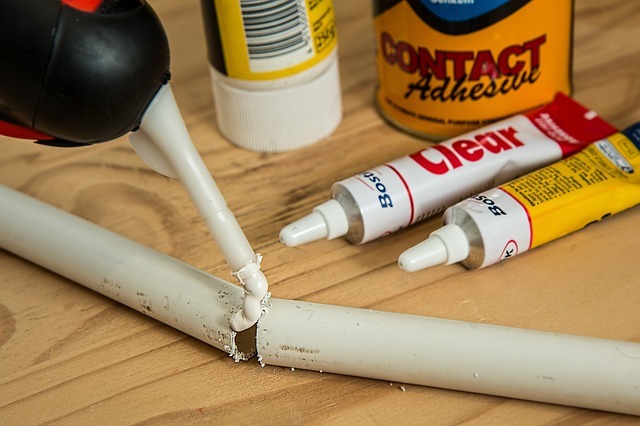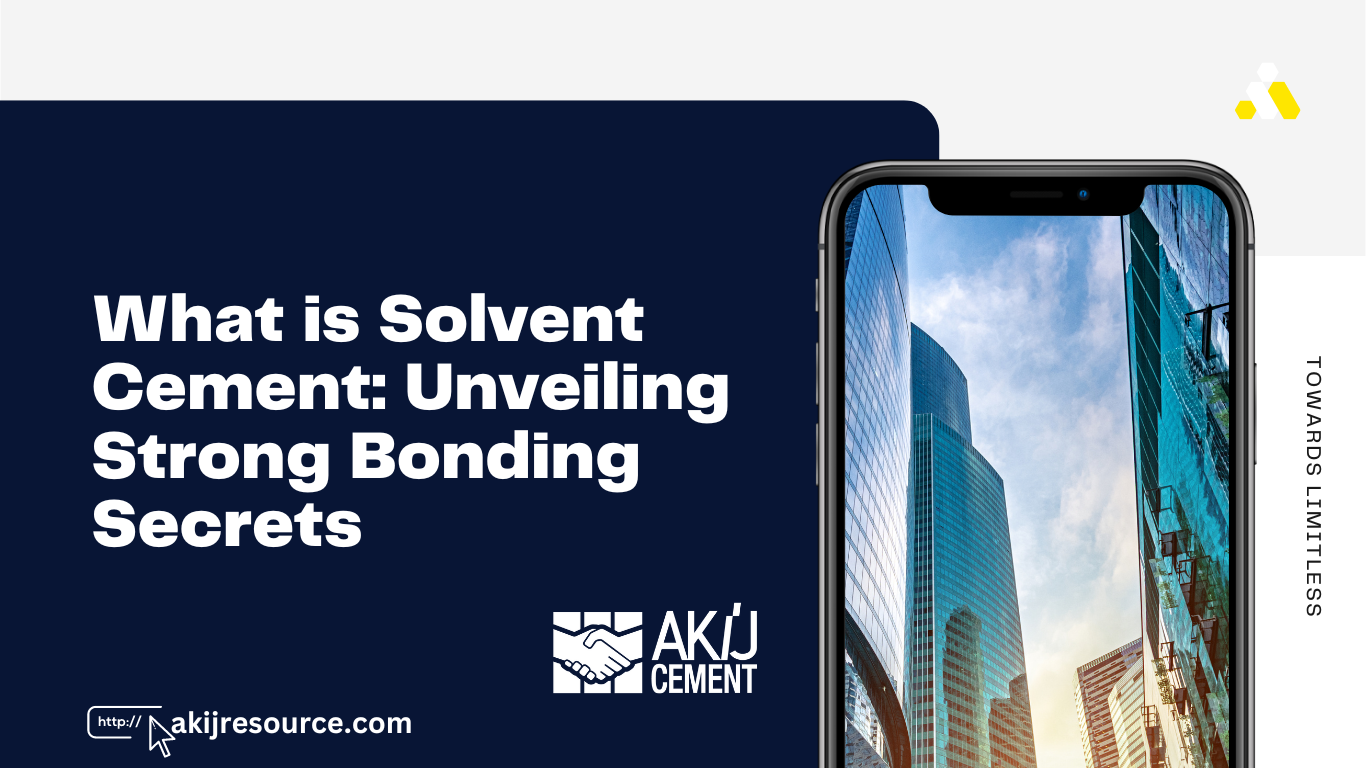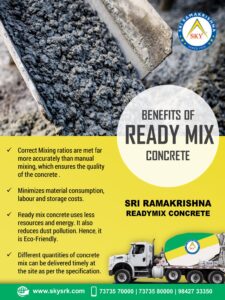Solvent cement is a substance used to join plastic pipes and fittings. It works by softening the surfaces to create a strong bond.
Solvent cement is vital for plumbing and piping systems. It ensures durable and leak-proof connections. Made from a blend of solvents and resins, it chemically fuses plastic surfaces. This method provides a seamless and secure joint. Solvent cement is easy to use and dries quickly.
It is compatible with various plastics like PVC, CPVC, and ABS. Proper application involves cleaning the surfaces and applying the cement evenly. This guarantees a strong and lasting connection. Solvent cement is essential for professionals and DIY enthusiasts in plumbing projects. It offers reliability, efficiency, and ease of use.
Introduction To Solvent Cement
Solvent cement is a key material used in various industries. It bonds materials together effectively. Understanding its basics helps in numerous applications.
The Basics Of Solvent Cement
Solvent cement is a mixture of chemicals. It softens the surfaces of materials, allowing them to fuse. This results in a strong bond.
Here are some important points about solvent cement:
- Composition: It contains solvents and resins.
- Application: Commonly used with plastics like PVC and CPVC.
- Bond Strength: Creates a durable and watertight seal.
- Setting Time: Takes a few minutes to set, but full strength is achieved in hours.
The process is simple. Apply the cement to the surfaces, join them, and wait for it to set.
Significance In Various Industries
Solvent cement plays a crucial role in different sectors. Its use spans from plumbing to construction.
Here is a table showing its significance:
| Industry | Usage |
|---|---|
| Plumbing | Joining PVC pipes |
| Construction | Bonding building materials |
| Automotive | Fixing plastic parts |
| Electrical | Securing conduit pipes |
Each industry benefits from the strong and reliable bonds solvent cement provides.
Here are some benefits:
- Cost-effective: It is inexpensive compared to other adhesives.
- Easy to use: Simple application process.
- Durable: Provides long-lasting bonds.
Understanding solvent cement’s basics and its significance is essential. It offers reliable and strong bonds for various applications.

Credit: www.corzan.com
Chemistry Behind The Bond
Solvent cement is a crucial component in plumbing and construction. It creates strong, durable bonds between plastic pipes and fittings. To understand how it works, we must dive into the chemistry behind the bond.
Solvent Cement Composition
The primary ingredients of solvent cement are solvents, resins, and fillers. These elements work together to create a powerful adhesive.
- Solvents: These break down the surface of the plastic, creating a soft, pliable layer.
- Resins: These provide the bonding material that fuses the softened surfaces.
- Fillers: These add bulk and improve the adhesive’s overall strength.
In essence, the solvents dissolve the outer layers of the plastic. The resins then meld the softened surfaces together. Fillers enhance the bond, making it more robust and long-lasting.
The Science Of Adhesion
The process of adhesion in solvent cement involves chemical and mechanical interactions. When the cement is applied, the solvents start breaking down the plastic’s surface.
- The plastic surface becomes soft and tacky.
- Resins in the cement flow into the softened plastic.
- The materials fuse as the solvents evaporate.
This dual action creates a bond that is both strong and durable. The bond is not just on the surface; it penetrates into the plastic. This results in a connection that can withstand high pressure and stress.
Understanding these chemical interactions helps in making better choices for plumbing and construction projects. The right solvent cement can make a significant difference in the longevity and reliability of the systems.
Types Of Solvent Cements
Solvent cement is a critical component for joining plastic pipes and fittings. It creates strong, reliable bonds. Different types of solvent cements cater to various materials. This section explores the main types: PVC, CPVC, and ABS solvent cements.
Pvc Solvent Cement
PVC solvent cement is used for bonding PVC pipes and fittings. It is suitable for both pressure and non-pressure systems. PVC cement works well for plumbing, irrigation, and drainage systems. It softens the surfaces of the pipes and fittings. Then, it fuses them together, creating a permanent bond.
| Application | Color | Set Time |
|---|---|---|
| Plumbing | Clear | 2-3 Minutes |
| Irrigation | Gray | 5-10 Minutes |
| Drainage | Blue | 2-5 Minutes |
Cpvc Solvent Cement
CPVC solvent cement is designed for CPVC pipes and fittings. It is used in hot and cold water systems. CPVC cement is suitable for both residential and industrial applications. It has a higher temperature resistance compared to PVC cement. This makes it ideal for hot water lines.
- Residential Water Systems
- Industrial Piping
- Hot Water Lines
Abs Solvent Cement
ABS solvent cement is made for ABS pipes and fittings. It is commonly used in drain, waste, and vent systems. ABS cement is fast-setting and provides a strong bond. It is suitable for both above-ground and underground applications. ABS cement works well even in low temperatures.
- Drain Systems
- Waste Systems
- Vent Systems
Choosing the right type of solvent cement ensures the longevity and reliability of your piping systems. Always refer to the manufacturer’s instructions for the best results.
Application Techniques
Applying solvent cement correctly is crucial for strong and leak-free joints. Proper techniques ensure the best results. Let’s explore the steps involved in applying solvent cement, focusing on surface preparation, applying solvent cement, and the curing process.
Surface Preparation
Start by cleaning the surfaces to be joined. Use a clean cloth to remove dirt and grease. Ensure the surfaces are dry before applying the cement. Sand the surfaces lightly to create a rough texture. This helps the cement bond better.
Applying Solvent Cement
Open the solvent cement can carefully. Use the applicator brush provided with the can. Apply a thin layer of cement to both surfaces. Make sure to cover the entire area evenly. Avoid applying too much cement. Excess cement can weaken the bond.
Join the surfaces immediately after applying the cement. Press them together firmly. Hold them in place for a few seconds. Ensure there are no gaps between the surfaces. Wipe off any excess cement with a clean cloth.
Curing Process
Allow the joint to cure for at least 24 hours. Do not disturb the joint during this time. The curing process is essential for a strong bond. Avoid applying stress to the joint while it cures.
After 24 hours, check the joint for any leaks. If the joint is secure, it is ready for use. If there are leaks, reapply the solvent cement and allow it to cure again.
| Step | Action | Time Required |
|---|---|---|
| Surface Preparation | Clean, dry, and sand surfaces | 5-10 minutes |
| Applying Solvent Cement | Apply thin layer and join surfaces | 2-5 minutes |
| Curing Process | Allow joint to cure undisturbed | 24 hours |
Advantages Of Using Solvent Cement
Solvent cement is essential for many construction and plumbing projects. It ensures strong, durable, and leak-proof joints. Let’s explore the advantages of using solvent cement in various applications.
Durability And Strength
Solvent cement creates extremely strong bonds between pipes and fittings. The bond becomes part of the material itself. This ensures that connections will not fail under pressure.
Using solvent cement results in highly durable joints. These joints can withstand heavy loads and stresses. This makes them ideal for long-term use in construction projects.
Waterproof And Chemical Resistant
Solvent cement is waterproof. It forms a tight seal that prevents leaks. This is crucial in plumbing systems where water leakage can cause significant damage.
Solvent cement is also chemical resistant. It can withstand exposure to various chemicals without degrading. This makes it suitable for industrial applications.
Ease Of Use
Solvent cement is easy to apply. You need minimal tools and experience to use it effectively. This makes it a popular choice for both professionals and DIY enthusiasts.
The application process is quick. It usually takes only a few minutes to set. This allows for faster project completion times.
| Advantage | Description |
|---|---|
| Durability and Strength | Creates strong, durable bonds that withstand heavy loads and stress. |
| Waterproof | Forms a tight seal preventing leaks, crucial for plumbing systems. |
| Chemical Resistant | Resists degradation from exposure to various chemicals. |
| Ease of Use | Requires minimal tools and experience, allowing for quick application. |
Overall, solvent cement offers numerous benefits. It ensures strong, reliable, and durable joints. It is a versatile solution for various applications.
Safety Measures And Precautions
Understanding and following safety measures for solvent cement is crucial. It ensures a safe working environment. Below, we outline essential guidelines to keep you and those around you safe.
Handling Guidelines
Always handle solvent cement with care. Wear protective gloves to avoid skin contact. Use safety goggles to protect your eyes from splashes.
Work in a well-ventilated area. Good ventilation helps reduce inhalation of harmful fumes. Store solvent cement in a cool, dry place. Keep it away from heat sources and open flames.
| Do | Don’t |
|---|---|
| Wear protective gear | Ignore ventilation needs |
| Store in a cool place | Expose to heat |
| Seal containers tightly | Leave containers open |
Health And Safety Risks
Solvent cement poses several health risks. Inhalation of fumes can cause dizziness or headaches. Prolonged exposure can lead to more serious health issues.
Skin contact with solvent cement can cause irritation or burns. Eye exposure may result in severe eye damage. Immediate rinsing with water is crucial if contact occurs.
Follow these simple steps to minimize risks:
- Always use in a ventilated area.
- Wear protective clothing and gear.
- Keep out of reach of children and pets.
First aid measures should always be on hand. Know how to react in case of an emergency.
Comparing Solvent Cement To Other Adhesives
When choosing an adhesive, it’s important to understand the differences. Here, we compare Solvent Cement to other adhesives like Epoxy and Super Glue, and also look at Traditional Welding Methods.
Epoxy And Super Glue
Epoxy is a two-part adhesive. It needs to be mixed before use. Epoxy is strong and durable. It works well on many materials. But, it takes time to cure. You must wait for it to set.
Super Glue, or cyanoacrylate, bonds quickly. It is very effective for small repairs. Super Glue works best on small surfaces. It dries fast, often in seconds. But, it is not suitable for large or flexible materials.
In comparison, Solvent Cement works differently. It softens the material’s surface. Then, it fuses the parts together. This makes a strong bond. Solvent Cement is fast and efficient. It is excellent for plastics like PVC.
Traditional Welding Methods
Traditional welding involves heat or pressure. It joins metals by melting them. This method is strong and permanent. Welding is used in construction and manufacturing. But, it requires special skills and equipment.
Solvent Cement is simpler. It does not need heat or special tools. It is easy for anyone to use. Solvent Cement is ideal for home repairs and DIY projects. It is perfect for non-metal materials.
Here is a comparison table:
| Adhesive | Material | Application | Strength | Setting Time |
|---|---|---|---|---|
| Solvent Cement | Plastics | Easy | High | Fast |
| Epoxy | Various | Moderate | High | Slow |
| Super Glue | Small Surfaces | Easy | Moderate | Fast |
| Traditional Welding | Metals | Complex | Very High | Varies |
Innovations And Future Developments
Solvent cement has evolved significantly with advancements in technology. Innovations and future developments in solvent cement are promising, particularly in creating eco-friendly formulations and enhancing performance. This section explores these new frontiers.
Eco-friendly Formulations
Eco-friendly formulations of solvent cement are gaining traction. Manufacturers are focusing on reducing volatile organic compounds (VOCs). This shift aims to minimize environmental impact and health hazards. These new formulations use less harmful chemicals. They ensure the same bonding strength without compromising safety.
Key features of eco-friendly solvent cement:
- Low VOC content
- Reduced toxicity
- Biodegradable materials
- Recyclable packaging
These features make eco-friendly solvent cements more sustainable. They are safer for both users and the environment.
Enhanced Performance Solvent Cements
Enhanced performance solvent cements are designed for superior bonding. They offer greater durability and strength. These cements can withstand extreme temperatures and pressures. This makes them ideal for industrial applications.
| Feature | Benefit |
|---|---|
| High tensile strength | Stronger bonds |
| Temperature resistance | Stable in extreme conditions |
| Fast curing time | Quick project completion |
| Versatility | Applicable to various materials |
These enhanced performance cements make projects more efficient. They ensure long-lasting results across diverse applications.
Conclusion: Innovations in solvent cement are paving the way for more sustainable and robust solutions. The future holds exciting developments that will benefit both industry and the environment.
Case Studies And Real-world Applications
Solvent cement is a powerful adhesive that plays a crucial role in various industries. Below, we explore some case studies and real-world applications of solvent cement. These examples illustrate its versatility and effectiveness in different sectors.
Plumbing And Pipe Joining
Solvent cement is widely used in plumbing. It ensures strong and leak-proof joints in PVC and CPVC pipes. Many plumbers rely on solvent cement for its reliability and ease of use.
- Case Study 1: A residential complex with over 100 units used solvent cement for their plumbing. The result was a durable and efficient water supply system.
- Case Study 2: An industrial facility needed a quick fix for a leaking pipeline. Solvent cement provided a fast and permanent solution.
Automotive And Aerospace Uses
In the automotive and aerospace industries, solvent cement is essential. It helps in bonding various materials, ensuring safety and performance.
- Case Study 1: A car manufacturer used solvent cement to bond plastic components. This resulted in a lighter and more fuel-efficient vehicle.
- Case Study 2: An aerospace company needed to bond composite materials. Solvent cement provided the required strength and durability for critical components.
These real-world applications show the importance of solvent cement in various fields. It offers a reliable and efficient solution for bonding and joining materials.
| Industry | Application | Outcome |
|---|---|---|
| Plumbing | Pipe joining | Leak-proof joints |
| Automotive | Bonding plastic components | Lighter vehicles |
| Aerospace | Bonding composite materials | Strong and durable components |

Credit: m.youtube.com
Choosing The Right Solvent Cement
Choosing the right solvent cement ensures a strong and durable bond. It can be overwhelming with so many options available. This guide helps you make an informed decision.
Factors To Consider
Several factors influence the choice of solvent cement. Understanding these factors helps you pick the best product.
- Material Compatibility: Ensure the solvent cement matches the material you’re bonding. Different types work for PVC, CPVC, and ABS plastics.
- Application Conditions: Consider the environment where you will apply the cement. Temperature and humidity can affect curing time.
- Viscosity: Choose the correct thickness. Thicker cement fills gaps better, while thinner cement provides a smoother finish.
- Drying Time: Fast-drying cement speeds up projects, while slower-drying options offer more working time.
Brand And Quality Assessments
Not all brands are equal. Assess the quality to get the best results.
| Brand | Quality Rating | Price Range |
|---|---|---|
| Brand A | 4.5/5 | $$ |
| Brand B | 4.0/5 | $ |
| Brand C | 4.8/5 | $$$ |
- Read Reviews: Customer feedback provides insight into performance and reliability.
- Check Certifications: Look for certifications that ensure quality and safety standards.
- Compare Prices: Balance cost with quality to get the best value.
Choosing the right solvent cement involves careful consideration of various factors and brand quality. Make an informed decision for the best results.
Common Mistakes And Troubleshooting
Using solvent cement can be tricky. Many people make common mistakes that lead to issues. Knowing what to avoid can save time and effort. Troubleshooting can help fix problems quickly.
Avoiding Application Errors
Applying solvent cement correctly is crucial. Here are some errors to avoid:
- Not cleaning the pipes: Dirt and grease can ruin the bond.
- Skipping the primer: The primer helps the cement stick better.
- Using too much cement: Excess can weaken the joint.
- Not allowing enough drying time: Rushing can cause leaks.
Solutions To Common Issues
Even with care, issues can arise. Here are some solutions:
| Issue | Solution |
|---|---|
| Weak joints | Clean and reapply the cement properly. |
| Leaks | Check for gaps and apply more cement if needed. |
| Excess cement | Wipe away excess and ensure the correct amount is used. |
| Slow drying | Allow more time or check the environment for humidity. |
Following these tips can help you use solvent cement effectively. Avoid common mistakes and use the solutions to fix any issues.
Regulations And Compliance
Solvent cement is widely used in plumbing and construction. To ensure its safe use, there are specific regulations and compliance standards. These standards help in maintaining quality and environmental safety.
Industry Standards
Solvent cement must meet certain industry standards. These standards guarantee the product’s effectiveness and safety. Key standards include:
- ASTM D2564: This standard applies to PVC solvent cement.
- ASTM F493: This standard covers CPVC solvent cement.
- ASTM D2235: This standard is for ABS solvent cement.
Manufacturers must follow these standards strictly. This ensures the solvent cement performs well in various applications.
Environmental Impacts And Regulations
Environmental safety is crucial when using solvent cement. Regulations help in minimizing harmful effects on the environment.
Important regulations include:
- VOC Limits: Volatile Organic Compounds (VOCs) are regulated to reduce air pollution. Solvent cement must have low VOC content.
- Safe Disposal: Proper disposal methods must be followed. This prevents soil and water contamination.
Table showing VOC limits for different types of solvent cement:
| Type | Maximum VOC Content (g/L) |
|---|---|
| PVC Solvent Cement | 510 |
| CPVC Solvent Cement | 490 |
| ABS Solvent Cement | 400 |
Compliance with these regulations ensures the safe and efficient use of solvent cement.
Conclusion And Summary
Understanding solvent cement is crucial for anyone working with plastic piping systems. This adhesive ensures a strong and durable bond. Let’s recap the essentials and share some final thoughts on why it’s important for strong bonding.
Recap Of Solvent Cement Essentials
Solvent cement is a chemical solution that softens the surfaces of PVC, CPVC, and ABS pipes. This allows the pipes and fittings to fuse together. The result is a single, seamless piece of plastic.
- Composition: Made of solvents and resins.
- Application: Applied to the surfaces to be joined.
- Curing: Dries and hardens to form a strong bond.
This process makes the joint as strong as the pipe itself. It’s widely used in plumbing, irrigation, and construction.
Final Thoughts On Strong Bonding
Solvent cement offers a reliable bonding solution. It ensures long-lasting and leak-proof connections. This makes it a preferred choice for many applications.
Here are some key benefits:
- Strength: Creates a bond that is as strong as the material.
- Durability: Resistant to various chemicals and environmental factors.
- Ease of Use: Simple to apply and doesn’t require special tools.
In summary, solvent cement is an essential tool for anyone working with plastic pipes. It ensures strong, durable, and reliable connections.

Credit: www.1tomplumber.com
Are the Bonding Properties of Solvent Cement Similar to Concrete?
When examining the bonding properties of solvent cement versus concrete differences, it is clear that they are not similar. Solvent cement is specifically designed to create strong bonds between plastic materials, while concrete bonding involves adhesion to aggregate and reinforcement. The composition and application of these materials are distinct.
Frequently Asked Questions
What Is Solvent Cement Used On?
Solvent cement is used for bonding PVC, CPVC, and ABS pipes and fittings. It creates a strong, leak-proof seal.
How Strong Is Solvent Cement?
Solvent cement creates a strong, durable bond in PVC and CPVC pipes. It chemically fuses materials, ensuring leak-free joints.
Is Solvent Cement Waterproof?
Yes, solvent cement is waterproof. It creates a strong, watertight bond for pipes and fittings, ensuring no leaks.
What Is The Difference Between Super Glue And Solvent Cement?
Super glue bonds instantly and works on various materials. Solvent cement chemically fuses plastics, creating a strong, permanent bond.
Conclusion
Solvent cement plays a crucial role in pipe fitting and repair. Its ease of use and strong bonds make it essential. Understanding its application ensures efficient plumbing projects. Always choose the right type for your specific needs. Proper usage will lead to long-lasting and reliable connections in your plumbing systems.
{ “@context”: “https://schema.org”, “@type”: “FAQPage”, “mainEntity”: [ { “@type”: “Question”, “name”: “What is solvent cement used on?”, “acceptedAnswer”: { “@type”: “Answer”, “text”: “Solvent cement is used for bonding PVC, CPVC, and ABS pipes and fittings. It creates a strong, leak-proof seal.” } } , { “@type”: “Question”, “name”: “How strong is solvent cement?”, “acceptedAnswer”: { “@type”: “Answer”, “text”: “Solvent cement creates a strong, durable bond in PVC and CPVC pipes. It chemically fuses materials, ensuring leak-free joints.” } } , { “@type”: “Question”, “name”: “Is solvent cement waterproof?”, “acceptedAnswer”: { “@type”: “Answer”, “text”: “Yes, solvent cement is waterproof. It creates a strong, watertight bond for pipes and fittings, ensuring no leaks.” } } , { “@type”: “Question”, “name”: “What is the difference between super glue and solvent cement?”, “acceptedAnswer”: { “@type”: “Answer”, “text”: “Super glue bonds instantly and works on various materials. Solvent cement chemically fuses plastics, creating a strong, permanent bond.” } } ] }





